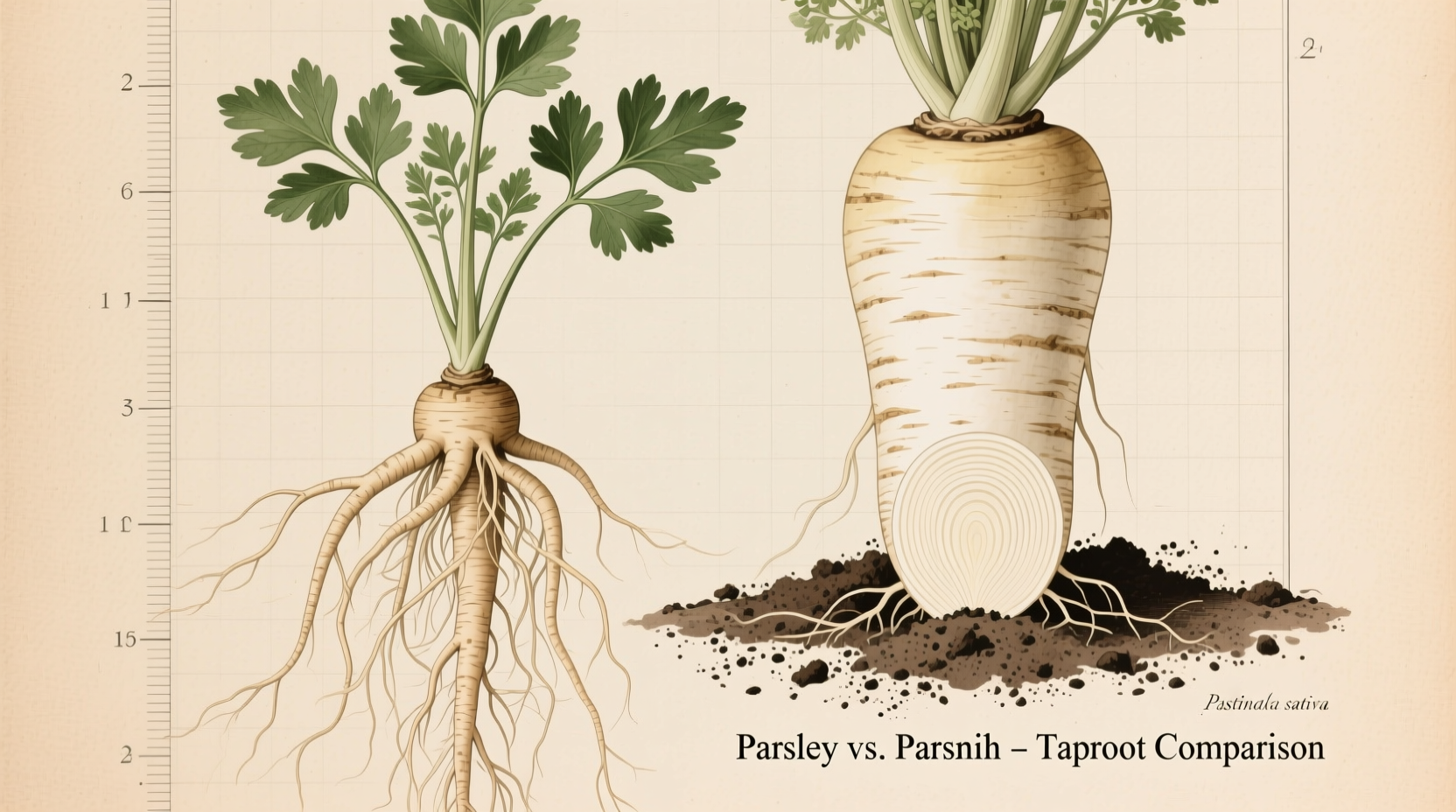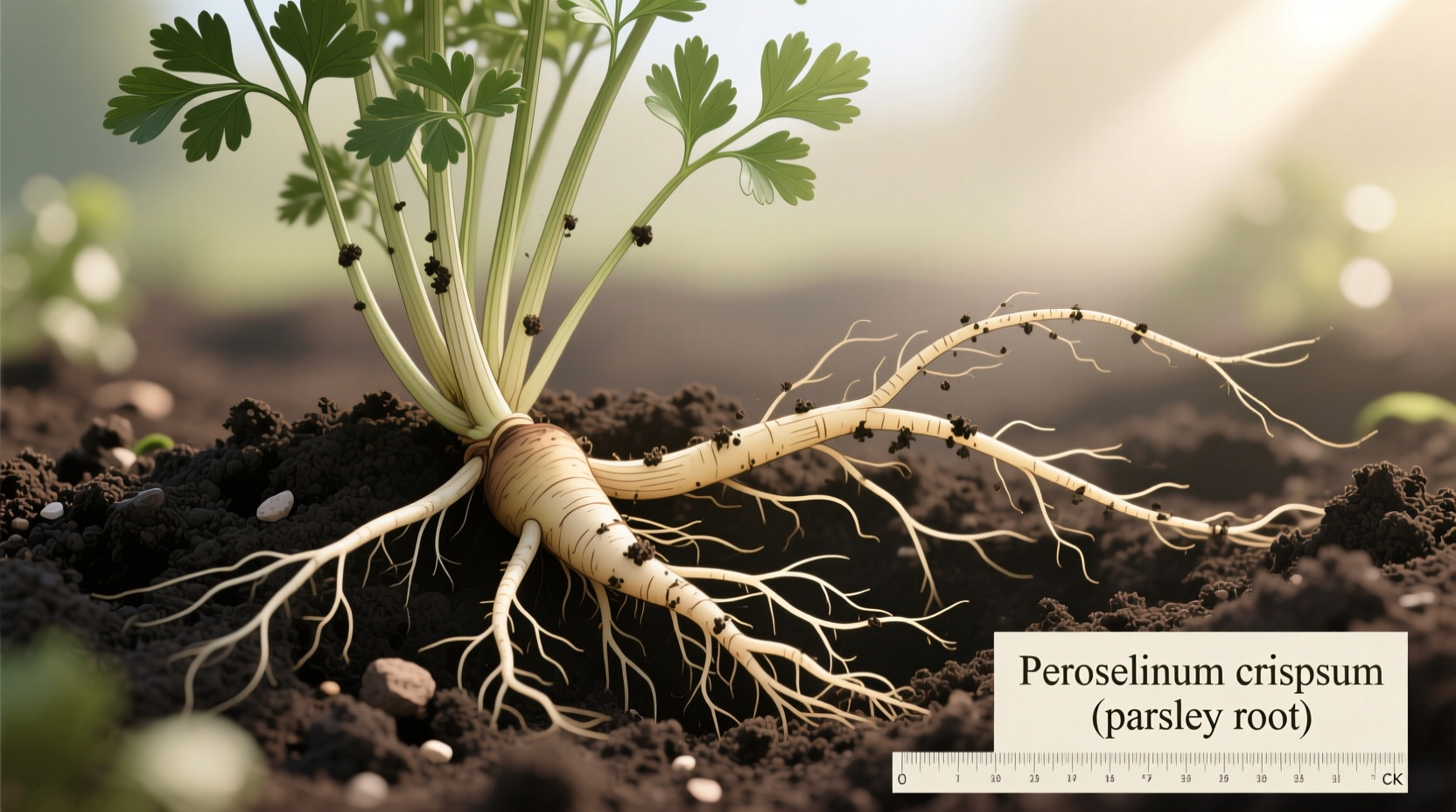Understanding the Parsley Root Reality
When you search for "parsley roots," you're likely encountering a common botanical confusion. Many home gardeners and cooks mistakenly believe parsley produces edible roots similar to parsnips. This misunderstanding stems from similar-sounding names and visual confusion between these two distinct plants.

Botanical Breakdown: Parsley vs. Parsnips
Parsley (Petroselinum crispum) develops a thin, fibrous taproot that anchors the plant but offers minimal culinary value. This contrasts sharply with parsnips (Pastinaca sativa), which are specifically cultivated for their large, cream-colored, sweet-tasting roots that can grow up to 12 inches long.
| Characteristic | Parsley Root | Parsnip Root |
|---|---|---|
| Botanical Classification | Petroselinum crispum (Apiaceae family) | Pastinaca sativa (Apiaceae family) |
| Root Structure | Thin, fibrous taproot (¼ inch diameter) | Thick, fleshy taproot (1-3 inches diameter) |
| Culinary Value | Minimal flavor, woody texture | Sweet, nutty flavor, tender when cooked |
| Primary Cultivation Purpose | Leaf production | Root harvest |
Why the Confusion Persists
The persistent confusion between parsley roots and parsnips has historical roots. According to research from the Royal Horticultural Society, both plants belong to the Apiaceae family (formerly Umbelliferae), which includes carrots, celery, and dill. This botanical relationship explains their similar flower structures and leaf patterns, leading to frequent misidentification.
Historical records from the USDA Agricultural Research Service show that in medieval Europe, the term "parsley" was sometimes used interchangeably for various related plants, contributing to ongoing confusion. The word "parsnip" itself derives from "pastinaca," which was used broadly for root vegetables in Latin texts.
What Gardeners Should Know
If you're growing parsley, understanding its root system helps optimize cultivation. Parsley develops a single taproot that can grow 6-12 inches deep but remains relatively thin. Unlike parsnips, which require deep, stone-free soil to develop properly shaped roots, parsley tolerates various soil conditions because its roots aren't the primary harvest target.
When harvesting parsley, focus on the leafy stems rather than the root. The root system continues developing throughout the plant's biennial lifecycle, but attempting to harvest mature parsley roots typically yields disappointing results—woody, flavorless specimens that lack culinary appeal.
Culinary Reality Check
While technically edible, parsley roots don't offer significant culinary value. Food science research from Cornell University's Department of Food Science confirms that parsley roots contain minimal sugars and volatile compounds compared to parsnips, resulting in a bland, fibrous texture when cooked.
Chef Antonio Martinez of the International Culinary Center notes: "I've experimented with parsley roots in my kitchen, and they simply don't deliver the flavor depth or texture that makes root vegetables valuable in cooking. The energy is better spent harvesting the vibrant leaves that give parsley its culinary purpose."
When to Choose Parsnips Instead
If you're seeking the sweet, earthy flavor often mistakenly attributed to "parsley roots," you actually want parsnips. These versatile root vegetables shine in:
- Roasted vegetable medleys
- Creamy soups and purees
- Stews and braises
- Mashed root vegetable combinations
Parsnips develop their characteristic sweetness after exposure to frost, making them a winter harvest favorite. Their sugar content (approximately 4.5g per 100g) significantly exceeds that of parsley roots, which contain negligible sugars.
Avoiding Common Mistakes
Many gardeners make these critical errors when dealing with "parsley roots":
- Expecting root vegetables - Planting parsley with the expectation of harvesting substantial roots
- Confusing seed packets - Mistaking parsnip seeds for parsley due to similar packaging
- Improper storage - Attempting to store parsley roots like parsnips, leading to rapid deterioration
- Wasted garden space - Allowing parsley to grow to maturity solely for non-existent root harvest
Practical Recommendations
For gardeners and cooks seeking the best results:
- Harvest parsley leaves regularly to encourage new growth
- Plant parsnips separately if you want edible roots
- Use parsley roots only for composting, not consumption
- Rotate parsley crops annually to prevent soil depletion
- Store harvested parsley properly (in water, refrigerated) for maximum leaf freshness
FAQ: Parsley Root Questions Answered
Can you eat parsley roots?
Technically yes, but they offer minimal culinary value. Parsley roots are thin, fibrous, and lack significant flavor compared to purpose-grown root vegetables like parsnips or carrots. Most culinary experts recommend focusing on parsley's leaves rather than attempting to use the roots.
Why do people confuse parsley with parsnips?
The confusion stems from both plants belonging to the Apiaceae family, having similar-sounding names, and sharing visual characteristics in their leaf structures. Historical usage of overlapping terminology in medieval Europe further contributed to this persistent misunderstanding.
Do parsley roots have any nutritional value?
Parsley roots contain trace amounts of vitamins and minerals found in higher concentrations in the leaves. However, their fibrous nature and minimal edible portion make them nutritionally insignificant compared to purpose-grown root vegetables like parsnips, which are rich in fiber, vitamin C, and potassium.
How can I tell if I'm growing parsley or parsnips?
Examine the seed packet carefully. Parsley produces curly or flat leaves with a thin taproot, while parsnips develop large, cream-colored roots with fern-like foliage. Parsley reaches harvestable leaf size in 70-90 days, while parsnips require 100-130 days to develop mature roots.
Can I substitute parsley roots for parsnips in recipes?
No, parsley roots lack the sweetness, texture, and volume needed to substitute for parsnips. If you need a parsnip alternative, consider using carrots, turnips, or celeriac, which offer similar texture and cooking properties.











 浙公网安备
33010002000092号
浙公网安备
33010002000092号 浙B2-20120091-4
浙B2-20120091-4